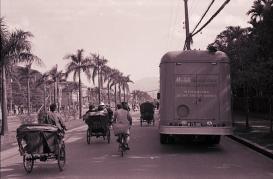A myriad of material devices, both large and small, crossed continents and formed the backbones of the International Atomic Energy Agency’s technical assistance programs to its member states in order to further the agency’s developing goals in the early 1960s. Taken together, the interest in international organizations and the concern about their material culture suggest that mobile laboratories, dosimeters, and glove boxes might complicate the political and diplomatic history of post war nuclear science. This project takes a closer look at two mobile radioisotope laboratories and explores their political power as diplomatic gifts, an analytic category that helps us unfold the dynamics of IAEA’s material culture. Donated from the United States to the IAEA, the two mobile units were used to train students and to exhibit the benefits of nuclear energy by travelling to several countries worldwide. As gifts, the labs required reciprocity and paved the way to the fulfilment of the United States’s three major aims: a) to dominate on a global scale the material culture of laboratory work on radioisotope techniques, b) to maintain an upper hand in the global market of radioisotopes, and c) to promote the Atoms for Peace agenda. By accepting the gift, the IAEA was called to facilitate through multilateral and multinational diplomacy the needs of the nuclear “haves.” This perspective creates cohesion in comprehending an otherwise complex transnational network of scientific communities, nuclear institutions and laboratories, international organizations, and national motives. Emphasis on the mobile laboratory as a diplomatic gift complements our understanding of traditional diplomacy—its legal, political, institutional aspects—with concerns about the scientific and material features of diplomatic practices.

Project
“Nuclear Classroom on Wheels” as a Diplomatic Gift: The IAEA’s Mobile Radioisotope Laboratories
- Maria Rentetzi
- Cooperation Partners:
- Technische Universität (Berlin)
- European Research Council (ERC)
